In this article we present the first publicly available beta version of the fifth IPv6 RIPEness star. This measures real IPv6 deployment from LIRs in the RIPE NCC service region. The methodology is what we think to be the best compromise yet between simple and fair. In this first version, 573 LIRs (>9%) qualify for the fifth star.
Introduction
IPv6 RIPEness has proven to be a good motivator for operators in the RIPE NCC service region to start thinking about IPv6 over the past few years. Until now, IPv6 RIPEness measured four indicators of IPv6 readiness, based on whether:
- The LIR has received IPv6 address space from the RIPE NCC
- The address space is visible in global routing
- There is a route6 object registered in the RIPE Database
- Reverse DNS has been set up for the IPv6 address space
The criteria above are all important steps to becoming "IPv6 ready". The next step would be to measure actual IPv6 deployment.
The next step: Measuring IPv6 deployment
LIRs who actually deploy IPv6 will receive a fifth star in IPv6 RIPEness. The methodology has been described in an earlier article on RIPE Labs: IPv6 RIPEness - More Stars and was presented at RIPE 65 .
In the spirit of the World IPv6 Launch in 2012, which had a deployment target of 1%, we are measuring actual deployment that is over a certain threshold. And because 1% is very 2012, we made the target 2% for 2013.
We plan to increase this threshold for the years beyond 2013 by powers of two (i.e. 4% in 2014, 8% in 2015), but we're very open to suggestions about it.
Currently, we have three ways to measure deployment. If one or more of these measurements for a given LIR shows more than 2%, and if that same LIR has the first four stars already, the LIR also gets the fifth star.
Current ways we measure deployment
Providing content over IPv6
For this category, we look at all the websites an LIR has listed on the Alexa 1 Million list and check how many of them are available over IPv6. We then apply a weight (1/ the rank on the Alexa list) to all the sites operated by the LIR, so that if an LIR has many sites in the Alexa 1M list, the higher ranking sites count more in the overall deployment metric. This weighting is meant to place focus on deploying IPv6 at high-traffic sites, as it could be perceived as unfair to treat high-traffic sites the same as much lower-traffic sites hosted by the same LIR. Exact details and the rationale behind the weighting are described in the earlier RIPE Labs article .
In the image below you can see a list of LIRs providing services in Ireland that have a fifth star - some of them for providing content, others for providing access, and some of them for both.
Those LIRs that have a percentage listed under "Content" provide some of their websites on IPv6. The percentage is calculated based on the weighting described above.
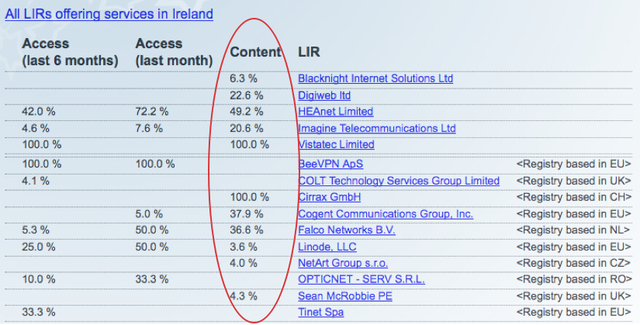
If at least 2% of all (weighted) content is accessible over IPv6, the LIR is included on the list. Not being in the list means either the LIR is under the threshold or we couldn't measure it (because the site was not listed in the Alexa 1M).
Providing IPv6 access to end users
For this category, we cooperate with APNIC on measuring the IPv6 capability of end users . To perform these measurements, Flash-based advertisements are placed on the Google advertising network. When an end user connects to a page that contains such an ad, the measurement script determines if the end user is capable of connecting over IPv6.
From this data we infer the percentage of end users in the LIR's address space who are using IPv6. This measurement samples a small subset of all of the end users on the Internet every month. If at least 2% of an LIR's customers are IPv6-capable, the LIR is included in the list.
For larger LIRs, we typically have enough data to obtain a decent estimate of actual deployment among its end users. For smaller LIRs, where we may get few or no measurements, the results are likely to be skewed. In these cases, looking at the data collected over the last six months, which include more samples, is more likely to give an accurate view than looking just at the last month's data.
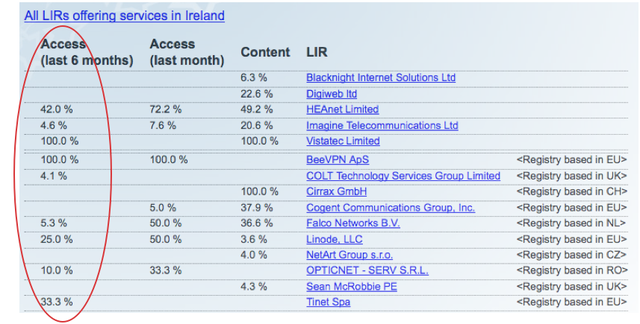
If we take HEAnet as an example, you can see in Figure 2 above that over the last six months, 42% of their end users were measured to be IPv6-capable.
The last month's data will better capture the current state of IPv6 deployment for LIRs for which we have enough measurement data. In the case of HEAnet, you can see (in Figure 3 below) that during the last month 72.2% of their end users were measured as being IPv6-capable.
If you are not listed in one of the access categories, it can either be due to being below the 2% threshold, or not being part of the measurement sample.
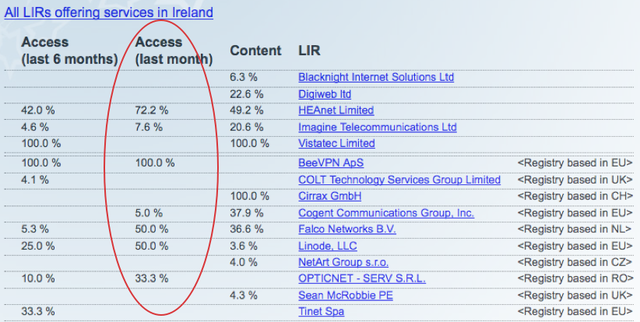
LIRs that qualify according to the metrics described above can be found here:
http://ipv6ripeness.ripe.net/5star/
Open Issues
This first implementation of the fifh star has a number of rough edges and we would like to get your feedback.
Using different LIRs for IPv4 and for IPv6 address space
In case an end point (an end user or a web server) that we measure uses IPv4 space from one LIR and IPv6 address space from another LIR (operated by the same organisation), only the LIR providing the IPv6 address space will be counted; the LIR providing the IPv4 address space will not be taken into account. The same applies when address space outside of the RIPE NCC service region is used. For now we're only looking at address space maintained in the RIPE NCC service region.
Measuring smaller LIRs
The current measurements we use only sample a part of the whole IP address space. This means that we only collect a small number of samples (or none at all) for LIRs that have a small customer base.
This could mean that small LIRs never receive a fifth star or, at the other extreme, it could lead to an LIR being listed as having 100% IPv6 deployment, in the case we only get a single sample that happens to be the one and only IPv6-enabled end point operated by the LIR (this could be in the NOC for instance).
As a single IPv6-enabled end point still represents IPv6 deployment, and there is no defined cut-off value to separate 'big' from 'small', we decided to show even the single-measurement LIRs.
A potential solution may be that we could do more targeted measurements, if (and only if), an LIR doesn't show up in the regular measurements.
Conclusion
and request for feedback
LIRs can earn a fifth IPv6 RIPEness star if they show actual deployment, either by providing content over IPv6 or by providing IPv6 access to their users.
We are planning to run this fifth-star measurement prototype at the beginning of each month, and will tweak the methodology based on community feedback.
This is very much a work in progress. We would like to receive feedback on the implementation up to this point along with ideas about how to improve the measurements, especially for smaller LIRs.
If you are an LIR that is not on the current fifth-star IPv6 RIPEness list, but you think you should be because you have an IPv6 deployment over 2%, we would really like to hear from you. Please leave a comment under the article on RIPE Labs, speak to us during the RIPE 66 Meeting, or send an email to labs [at] ripe [dot] net.
If we eventually get to the point when too many LIRs qualify for the fifth star, IPv6 RIPEness will have outlived its purpose of promoting IPv6 deployment by making deployments visible - in which case we can stop measuring and live in a world where IPv6-only becomes a viable option!

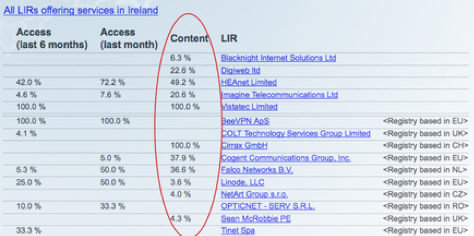


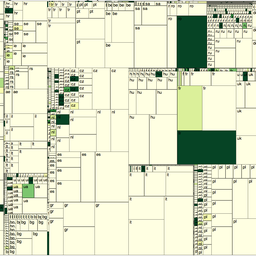



Comments 5
The comments section is closed for articles published more than a year ago. If you'd like to inform us of any issues, please contact us.
Sander Steffann •
Woohoo! 100% in all columns :-)
David •
Where is method 3 ?
Emile Aben •
Hi David, Can you elaborate a bit? It's unclear to me what you mean by 'method 3'.
Tobbe •
Ok, I have about 20 pages about IPv6 at https://dnssecandipv6.se but It's no way those pages is in Alexa one miljon pages.... We are four star already but we will never get the last star... :( or :) /Tobbe
Emile Aben •
Hi Tobbe, The problem of measuring "smaller" parties is acknowledged in the article above for access networks, but naturally also applies to content (or any other type of network). If you know of a good solution that scales and is fair to all parties involved, please let us know.